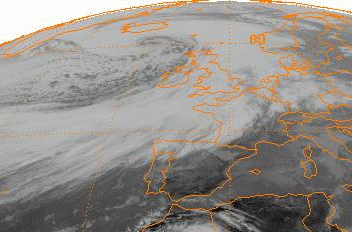'Bombogenesis' freak weather storm kills two in California
The storm is the strongest to hit the state in six years.
California has been hit by a severe weather storm known as bombogenesis, which has killed two people.
The storm, which is the strongest the Golden State has seen in years, has opened two sinkholes, seen 100 people evacuated from their homes, and left another 100,000 without power in the south of California.
A 55-year-old man was killed when a tree fell, causing power lines to fall on his car and electrocute him in in the Sherman Oaks district, in Los Angeles.
Another motorist died in their car when it was submerged in a flash flood in Victorville, a town 100 miles east of Los Angeles.
They were discovered when a fire service helicopter tried to rescue those gripping to their cars for safety as their vehicles were washed down one of the town's flooded streets.
One person was rescued from the roof of their car in the mission.
Hundreds of flights have also been delayed or cancelled at Los Angeles Airport since the storm has taken hold, and half a dozen freeways have been closed in response to the high weather alert.
Winds were said to top more than 80mph in some parts of Los Angeles County, according to Los Angeles Times, with nearly 8in (20cm) of rain falling in one area.

A satellite view of the Braer Storm bombogenesis of January 1993, from the National Climatic Data Center
Ryan Maue, a meteorologist for WeatherBell Analytics, told the Los Angeles Times that 10 trillion gallons of rain would fall on California over the next week, the same amount needed to power Niagara Falls for 154 days.
The storm is expected to dump up to 6in of rain on Los Angeles County beaches and valleys and up to 10in on foothills and coastal mountain slopes, according to the National Weather Service.
A bombogenesis, also known as a "weather bomb" and "explosive cyclogenesis", is as a cyclone that forms over water when hot and cold air meet, resulting in a severe drop of atmospheric pressure over a 24 hour period.
The last bombogenesis to hit the UK was seen in Aberdeenshire in 2011. The cyclone hit speeds of 165mph, causing a wind turbine to burst into flames.
© Copyright IBTimes 2024. All rights reserved.






